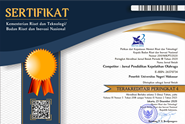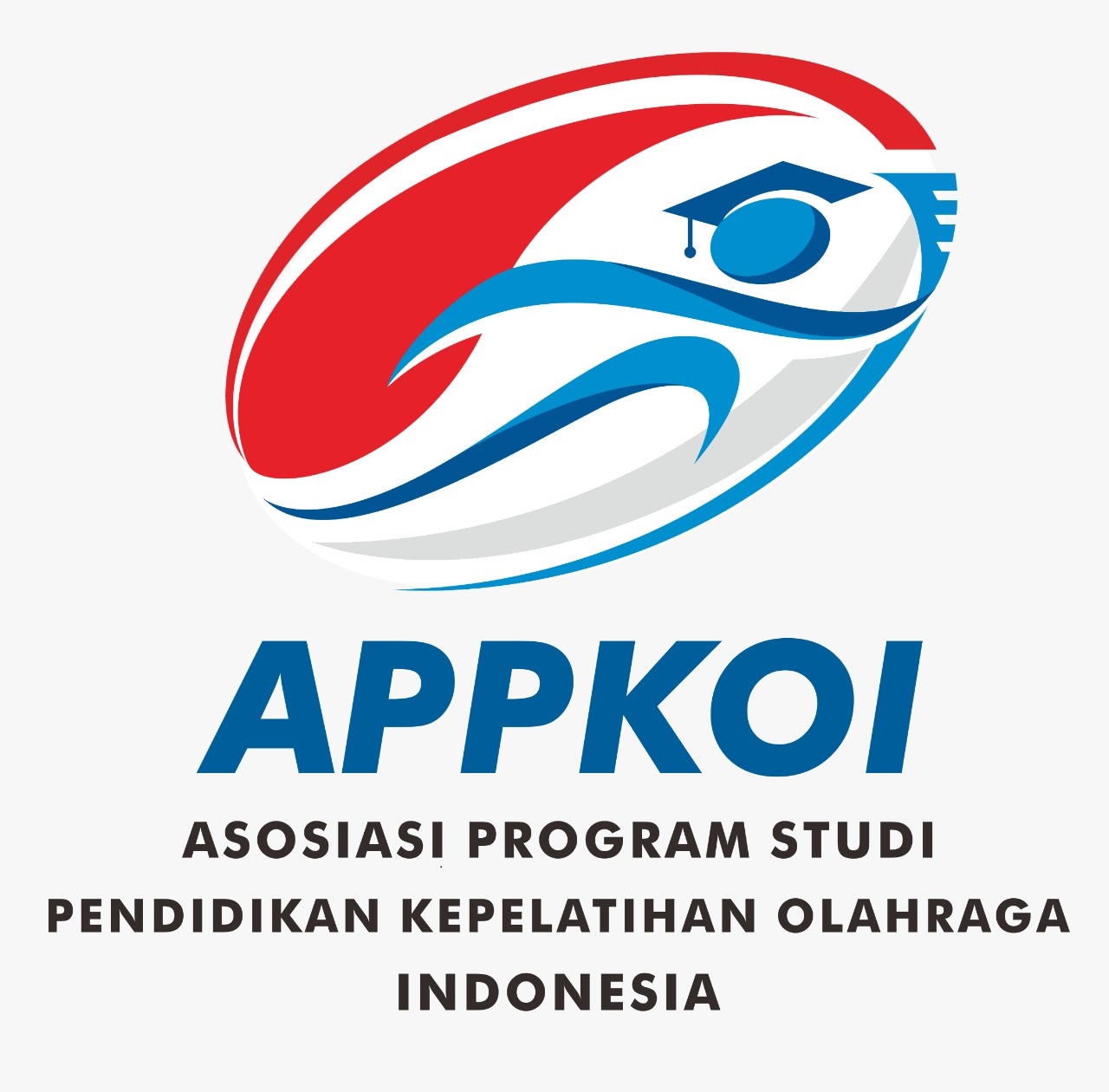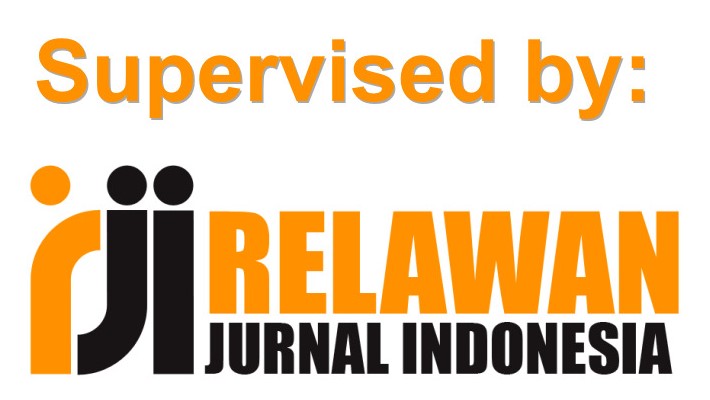Analysis of Students' Creative Thinking Levels in Rhythmic Gymnastics Learning
(1) Jambi University
(2) Jambi University
(3) Jambi University
(4) Jambi University
(5) Jambi University
(*) Corresponding Author
DOI: https://doi.org/10.26858/cjpko.v16i1.59255
Abstract
Keywords
Full Text:
PDFReferences
Al-furqon, R., Aisyah, S., & Anshori, M. I. (2023). Conscientiousness and Creativity : Unraveling the. Jurnal Riset Dan Inovasi Manajemen, 1(3), 62–85. https://doi.org/https://doi.org/10.59581/jrim-widyakarya.v1i2
Amaliyah, Aam., Fitroh, Aulia., Kurniawati, Fadilah, Diah., Zakia, Amanda, Nur., Yulia, Qodrawati, R. (2022). Analisis Kemampuan Berpikir Kreatif Matematis Siswa Pada Sekolah Dasar Karang Tengah 6. Jurnal Ilmiah Multi Disiplin Indonesia, 1(9), 1278–1285. https://doi.org/https://doi.org/10.32670/ht.v1i9.1967
Aminuriyah, S., Markhamah., & Sutama. (2022). Pembelajaran Berdifferensiasi: Meningkatkan Kreatifitas Peserta Didik. Jurnal Mitra Swara Ganesha, 9(2), 89–100.
Arifudin, O., & Raza, Ali, H. (2022). Teacher Personality Competence In Building The Character Of Students. International Journal of Education and Digital Learning (IJEDL), 1(1), 5–12. https://ij.lafadzpublishing.com/index.php/IJEDL/article/view/3
Conradty, C., Sotiriou, S. A., & Bogner, F. X. (2020). How creativity in STEAM modules intervenes with self-efficacy and motivation. Education Sciences, 10(3). https://doi.org/10.3390/educsci10030070
Cremin, T., & Chappell, K. (2021). Creative pedagogies: a systematic review. Research Papers in Education, 36(3), 299–331. https://doi.org/10.1080/02671522.2019.1677757
Florentina, N. L. (2017). Pengaruh Model Pembelajaran Kooperatif Terhadap Kemampuan Berpikir Kreatif Matematis Siswa. Formatif: Jurnal Ilmiah Pendidikan MIPA, 7(2), 96–106. https://doi.org/10.30998/formatif.v7i2.1877
Hamdani, T., Ch, R. U., & Ainiyah, N. (2023). AL-AFKAR : Journal for Islamic Studies Implementasi Kurikulum Merdeka Belajar Dalam Meningkatkan Kemampuan Berpikir Kreatif Siswa Pada Pelajaran PAI Di SMKN 10 Bandung. Journal for Islamic Studies, 6(3), 611–626. https://doi.org/10.31943/afkarjournal.v6i3.676..Implementation
Karwowski, M. (2022). School Does Not Kill Creativity. European Psychologist, 27(3), 263–275. https://doi.org/10.1027/1016-9040/a000449
Kurniati, F., Soetjipto, S., & Indana, S. (2018). Membangun Keterampilan Berpikir Kreatif Siswa Melalui Pembelajaran Berbasis Inkuiri Terbimbing. Jurnal Penelitian Pendidikan IPA, 3(1), 15. https://doi.org/10.26740/jppipa.v3n1.p15-20
Langdon Warren, L. (2021). The Importance of Teacher Leadership Skills in the Classroom. Education Journal, 10(1), 8. https://doi.org/10.11648/j.edu.20211001.12
Lian, B., Kristiawan, M., & Fitriya, R. (2018). Giving creativity room to students through the friendly school’s program. International Journal of Scientific and Technology Research, 7(7), 1–7.
Mayarni, M., & Yulianti, Y. (2020). Hubungan antara Kemampuan Berpikir Kritis dengan Kemampuan Berpikir Kreatif Siswa pada Materi Ekologi. PENDIPA Journal of Science Education, 4(3), 39–45. https://doi.org/10.33369/pendipa.4.3.39-45
Moma, L. (2015). Pengambangan Instrumen Kemampuan Berpikir Kreatif Matematis Untuk Siswa SMP. Delta-Pi: Jurnal Matematika Dan Pendidikan Matematika, 4(April), 27–41. https://doi.org/DOI: https://doi.org/10.33387/dpi.v4i1.142
Qomariyah, D. N., & Subekti, H. (2021). Pensa E-Jurnal : Pendidikan Sains Analisis Kemampuan Berpikir Kreatif: Studi Eksplorasi Siswa Di Smpn 62 Surabaya. PENSA E-JURNAL: Pendidikan Sains, 9(2), 242–246. https://doi.org/https://ejournal.unesa.ac.id/index.php/pensa/index
Richardson, C., & Mishra, P. (2018). Learning environments that support student creativity: Developing the SCALE. Thinking Skills and Creativity, 27, 45–54. https://doi.org/10.1016/j.tsc.2017.11.004
Rohani. (2017). RAUDHAH Program Studi Pendidikan Guru Raudhatul Athfal (PGRA) ISSN: 2338-2163 - V. Meningkatkan Kreativitas Anak Usia Dini Melalui Media Bahan Bekas.
Sabarudin, Bangun, Y. Sunarno, Agung. Damanik, Amri, S. (2023). Pengantar Aktivitas Ritmik Konsep, Teori dan Panduan.
Simanjuntak, M. P., Hutahaean, J., Marpaung, N., & Ramadhani, D. (2021). Effectiveness of problem-based learning combined with computer simulation on students’ problem-solving and creative thinking skills. International Journal of Instruction, 14(3), 519–534. https://doi.org/10.29333/iji.2021.14330a
Sugiyono. (2019). Metode Penelitian Kuantitatif, Kualitatif, dan R&D. In Alphabet
Syarifan, N. (2018). Pengembangan Berpikir Kreatif. Journal Basic Of Education, 03(01), 105–116. https://doi.org/DOI : 10.24269/ajbe.v3i1.1302
Tathahira, T. (2020). PROMOTING STUDENTS’ CRITICAL THINKING THROUGH ONLINE LEARNING IN HIGHER EDUCATION: Challenges and Strategies. Englisia: Journal of Language, Education, and Humanities, 8(1), 79. https://doi.org/10.22373/ej.v8i1.6636
Winata, K. A. (2020). SCAFFOLDING : Jurnal Pendidikan Islam dan Multikulturalisme Tuntutan Era Revolusi Industri 4 . 0 Koko Adya Winata UIN Sunan Gunung Djati Bandung SCAFFOLDING : Jurnal Pendidikan Islam dan Multikulturalisme. SCAFFOLDING: Jurnal Pendidikan Islam Dan Multikulturalisme, 2(1), 12–24. https://doi.org/https://doi.org/10.37680/scaffolding.v2i1.193
Wirnoto, T., & Ratnaningsih, N. (2022). Problematika Pengembangan Kreativitas Peserta Didik Dalam Pembelajaran Matematika Berdasarkan Persepsi Guru. Jurnal Pendidikan Dan Pembelajaran Matematika Indonesia, 11(1), 27–40. https://doi.org/10.23887/jppmi.v11i1.760
Article Metrics
Abstract view : 24 times | PDF view : 4 timesRefbacks
- There are currently no refbacks.
Copyright (c) 2024 Yonifia Anjanika, Atri Widowati, sugih suhartini, fitri diana, Grafittie Decheline

This work is licensed under a Creative Commons Attribution 4.0 International License.
COMPETITOR IS LICENSED BY :
 COMPETITOR is licensed under a Creative Commons Attribution 4.0 International License.
COMPETITOR is licensed under a Creative Commons Attribution 4.0 International License.
COMPETITOR EDITORIAL LOCATION :
![]() Kampus FIK Banta Bantaeng, Jalan Wijaya Kusuma Nomor 14, Rappocini, Makassar, Postal Code 90222
Kampus FIK Banta Bantaeng, Jalan Wijaya Kusuma Nomor 14, Rappocini, Makassar, Postal Code 90222
COMPETITOR IS INDEXED BY















